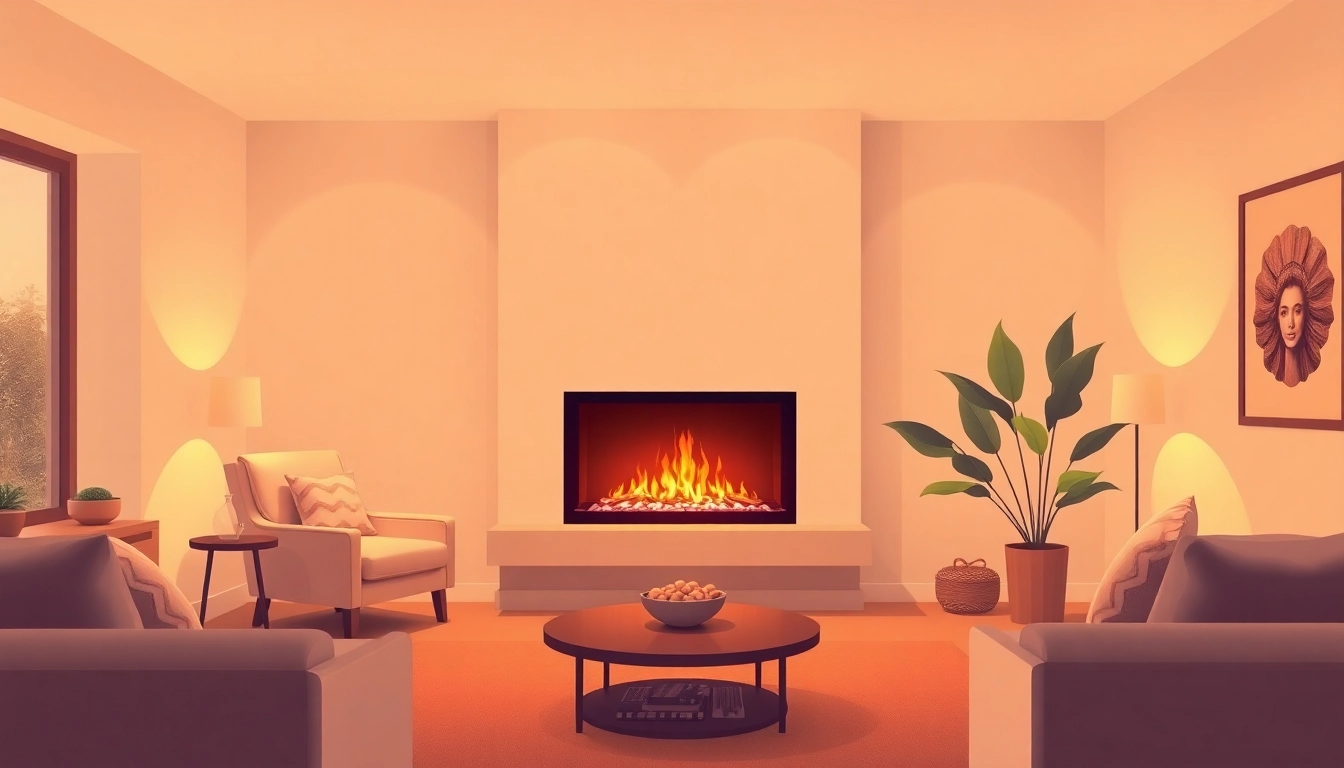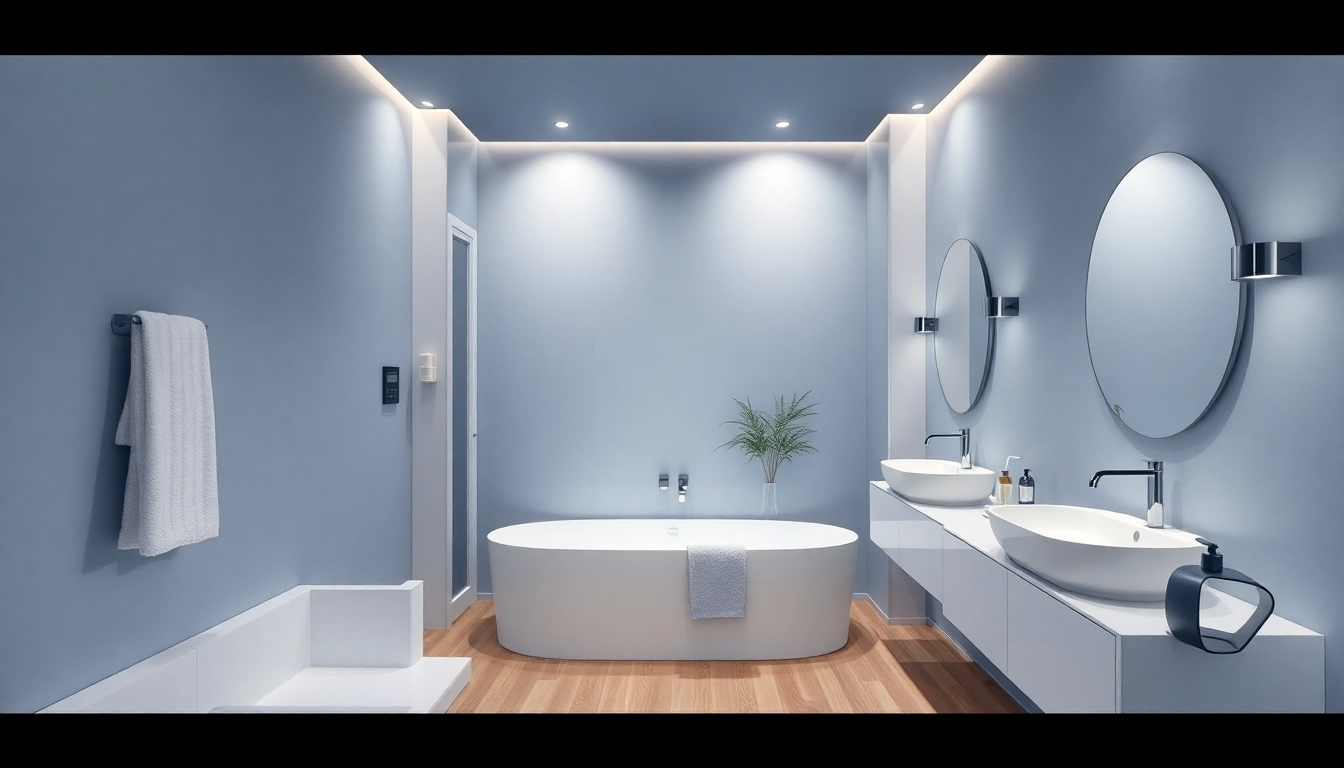Introduction to Water Vapor Fireplaces
In recent years, water vapor fireplaces have emerged as an innovative and stylish solution for homeowners seeking an alternative to traditional heating methods. These modern fixtures not only provide aesthetic appeal but also enhance the atmosphere of a room without the concerns associated with heat or harmful emissions. This article explores the ins and outs of water vapor fireplaces, from their operation and benefits to installation and maintenance considerations.
What is a Water Vapor Fireplace?
A water vapor fireplace is a type of electric fireplace that creates a realistic flame effect using water vapor, rather than burning wood or fossil fuels. This technology, often referred to as “mist flame” or “steam flame,” employs ultrasonic technology to generate a fine mist of water that is illuminated by LED lights. The result is an enchanting illusion of fire that offers the ambiance of a traditional fireplace without the associated risks.
How Does a Water Vapor Fireplace Work?
The operation of a water vapor fireplace is based on a few key components. When the fireplace is activated, an ultrasonic transducer vibrates at a high frequency, transforming water into a fine mist. This mist is then projected into the air, where it interacts with LED lighting to create the visual effect of dancing flames. Crucially, the flames produced are cool to the touch, making these fireplaces safe for children and pets. Furthermore, since there is no combustion involved, these fireplaces do not emit smoke, soot, or harmful gases.
Benefits of Choosing Water Vapor Fireplaces
Water vapor fireplaces come with a plethora of benefits that make them an appealing choice for many homeowners:
- Safety: With no actual fire or heat output, they are safer for households with children or pets.
- Environmental Friendliness: They do not produce harmful emissions, making them a cleaner option compared to traditional gas or wood-burning fireplaces.
- Versatility: Water vapor fireplaces can be installed in various settings—homes, commercial spaces, and even outdoor areas—due to their flexible designs.
- Aesthetic Appeal: The visual charm of water vapor flames can create a cozy and inviting atmosphere, enhancing the overall decor of a space.
- Cost-Efficiency: They generally have lower operational costs than traditional fireplaces, as they do not require expensive fuel sources.
Types of Water Vapor Fireplaces
Free-standing Models
Free-standing water vapor fireplaces offer a flexible and portable option for homeowners. These units come in various designs and sizes, making them ideal for any room configuration. Their mobility allows users to reposition them according to seasonal decor changes or personal preferences. Many models also integrate heating capabilities, which can be beneficial during colder months.
Wall-mounted Options
Wall-mounted water vapor fireplaces are a popular choice for those looking to save space while adding a modern touch to their homes. Installed directly on walls, these units can serve as a focal point without occupying floor space. They come in various styles, from minimalist designs that blend seamlessly into modern interiors to bold, artistic statements that enhance traditional decor.
Fireplace Inserts
If you have an existing fireplace, consider installing a water vapor fireplace insert. These units can fit into traditional hearths, allowing homeowners to upgrade their fireplace systems without extensive renovations. Inserts can utilize the existing chimney structure while providing a more environmentally friendly and visually stunning alternative to wood or gas burning.
Installation and Maintenance
Installation Process Guide
The installation process for a water vapor fireplace varies depending on the type (free-standing, wall-mounted, or insert). Generally, the following steps apply:
- Choose the Location: Find an appropriate space with access to an electrical outlet. If installing a wall-mounted model, consider the height for optimal viewing.
- Prepare the Area: Clear the space and make sure it meets the manufacturer’s specifications regarding proximity to flammable materials.
- Follow Manufacturer Instructions: Adhere to the provided installation guidelines, as they may differ between models.
- Connect Power: Ensure the unit is correctly connected to a power source, ensuring safety regulations are followed.
- Fill Water Reservoir: Most models require periodic filling of a water reservoir or can be connected to a water line for continuous operation.
Regular Maintenance Tips
Water vapor fireplaces require relatively minimal maintenance compared to traditional fireplaces. However, some regular upkeep is essential:
- Clean Water Reservoir: Regularly empty, clean, and refill the water reservoir to prevent mineral buildup and ensure optimal vapor production.
- Dusting and Derbies: Wipe down the exterior surfaces to keep the fireplace looking new.
- Check Electrical Components: Periodically inspect electrical connections for any signs of wear or damage.
Common Troubleshooting Issues
Like any appliance, water vapor fireplaces can present occasional issues. Some common concerns include:
- Flame Illusion Loss: If the flame effect appears weak or absent, verify that the water reservoir is filled and the mist output settings are correct.
- Water Leakage: If water is leaking from the unit, check all connections and ensure that the reservoir is securely in place.
- Electrical Problems: Frequent shut-offs or flickering lights can indicate an electrical issue. It may require professional assessment.
Cost Considerations
Initial Purchase Price
The cost of purchasing a water vapor fireplace can vary widely based on factors such as type, brand, and features. Free-standing models may start around $300, while more advanced, decorative units can exceed $2000. For those interested in inserting a water vapor fireplace into an existing structure, the prices for inserts vary greatly as well, dependent on design and functionality.
Operational Costs
Operational costs for water vapor fireplaces are typically lower than those of traditional fireplaces. Since they are electric, they primarily rely on electricity to run. Generally, the cost per hour of operation is lower compared to gas or electric heating solutions. Additionally, since these fireplaces do not produce heat, there are no costs associated with fuel purchases such as wood logs or gas refills.
Comparative Cost Analysis with Traditional Fireplaces
When comparing water vapor fireplaces to traditional wood or gas models, several cost aspects emerge:
- Installation Costs: Traditional fireplaces often require extensive installation, including chimney work and ventilation, leading to higher initial costs.
- Maintenance: Water vapor fireplaces generally require less frequent and less costly maintenance than wood-burning or gas alternatives.
- Fuel Costs: Traditional fireplaces incur ongoing fuel expenses, while water vapor fireplaces are usually affordable to operate due to their electric source.
Customer Experiences and Reviews
Testimonials from Water Vapor Fireplace Owners
Consumer feedback on water vapor fireplaces has been predominantly positive, highlighting the aesthetic appeal and safety features. Customers appreciate the realistic flame effect and the ability to enjoy the ambience without the need for wood or gas. Many reviews express satisfaction particularly in households with children and pets, emphasizing the fireplace’s safety.
Analysis of Customer Feedback
While positive reviews dominate the discussion, some customers have pointed out certain drawbacks. Concerns often center around the need for regular maintenance, potential operational limits based on water capacity, and limitations regarding actual heat output. A thorough review of feedback indicates a mix of appreciation for the ambiance provided and considerations for the practicality of installation and upkeep.
Overall Value Assessment
In terms of overall value, water vapor fireplaces create a compelling case for homeowners desiring an elegant focal point without the hazards of traditional heat sources. For those prioritizing design flexibility, aesthetic value, and safety over substantial heat output, these fireplaces offer a magnificent and innovative solution.



